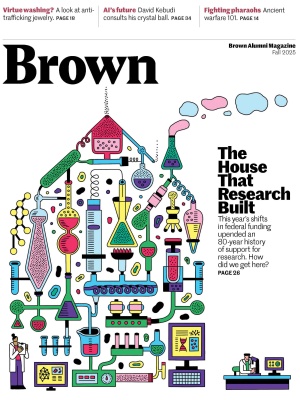Moms Like Us by Jordan Roter ’97 (Little A)
There’s plenty of striving and conniving among the four Los Angeles private school moms in Roter’s first adult novel. She’s the author of two young adult novels, Camp Rules and Girl in Development, but here we’ve entered the universe of the Palms School, where a year-end family and staff glamping trip to El Capitan Canyon is in the works, only someone might not make it back alive. Roter’s chatty narrator whisks readers between various points of view as it gradually becomes clear how far certain parents will go to protect their kids. A quick, comic read with affairs, tennis club snubs, sonic baths, paternity questions, and some very dangerous llamas.
How To Be Well: Navigating Our Self-Care Epidemic, One Dubious Cure at a Time by Amy Larocca ’97 (Knopf)
Despite the how-to title, this is more of a sprawling but engaging tour of the $5.6 trillion dollar wellness industry, shot through with history, interviews, and Larocca’s own adventures en route to becoming a “well woman.” Larocca spent two decades as a fashion journalist for New York Magazine and sees fashion and wellness as both deeply rooted in desire. In the wellness world this translates to maximizing your potential, whether through exercising or purchasing. Larocca touches on a vast span of topics, from Ozempic to seven day cleanses, not to mention body positivity, biohacking, and SoulCycle as a religion substitute. But she is also adept at highlighting how our culture’s insatiable quest for wellness is intertwined with an equally powerful quest for corporate profits.
Ferment: Simple Recipes from My Multicultural Kitchen by Kenji Morimoto ’11 (The Experiment)
If you’ve ever had the faintest desire to pickle a radish, this is a fine place to start. As a child in Chicago, when Morimoto’s family cooked, he was in charge of making pickles. So it seems like only a slight surprise that his debut would focus on fermentation. You’ll find plenty of background information, like the difference between dry and wet brining, plus all the safety tips and techniques needed to get started. You’ll also find bright takes on traditional fermented foods—like chili, orange, and coriander sauerkraut and Brussels sprout and cranberry kimchi. A generous selection of recipes, from mains to deserts, offer ways to serve your newly pickled creations. Fermenting can be a slow ride but, as Morimoto points out, the end results will probably expand both your palate and your microbiome.
Alumni Fiction
Pictures of My Desire by Caroline Goldberg Igra ’85 (Koehler Books)
The Accident by Lori Miller Kase ’85 (Woodhall Press)
We Go Slow by Mariahadessa Tallie ’20 AM, ’25 PhD (Simon & Schuster)
Dark Matter: Women Witnessing: Dreams Before Extinction by Lisa Weil ’79 AM, ’87 PhD (NatureCulture)
Alumni Nonfiction
The Couples Communication Handbook: The Skills You Never Learned for the Marriage You Always Wanted by Raffi Bilek ’03 (HeartZig Press)
Beyond White Picket Fences: Evolution of An American Town by Catherine Simpson Bueker ’00 AM, ’03 PhD (Russell Sage Foundation)
Out of Gaza: A Tale of Love, Exile, and Friendship by Katharina Galor ’96 PhD (Potomac Books)
Jewish Refugees in Shanghai: Experiences, Memories, Interviews, Histories by Steve Hochstadt ’70, ’75 AM, ’83 PhD (Berghahn Books)
Conscientious Objectors at War: The Vietnam War’s Forgotten Medics by Gary Kulik ’80 PhD (Texas Tech Univ. Press)
Across the Universe: The Past, Present, and Future of the Crossword Puzzle by Natan Last ’12 (Penguin)
Living and Dying in Sao Paulo: Immigrants, Health, and the Built Environment in Brazil by Jeffery Lesser ’82, ’84 AM (Duke Univ. Press)
Road to Nowhere: How a Highway Map Wrecked Baltimore by Emily Lieb ’99 (Univ. of Chicago)
Irresistible Calling: A Memoir of Journalism and the Arts by Sean Mitchell ’70 (TCU Press)
Reclaiming Your Inner Child by Nina Mongendre ’04 (Hay House)
Through the Long Desert: Georgia O'Keeffe and Frank Lloyd Wright by Sarah Rovang ’16 PhD (Rizzoli Electa)
The 13 Power Moves of Dark Psychology: Learn the Tricks to Protect Yourself from Abuse and Covertly Influence Anyone by Lena Sisco ’97 AM (Ninth Bridge)
Independently Publish
Buddhism and Infinity: A Fun Thought Experiment About Mind Energy by Jecca ’84
Natural Causes: The Inheritance of Anxiety by Matthew Rose ’81
The Fractal Melody by Frances Wood ’73
Alumni Poetry
Too Jagged to Hold by Kristen Hornung ’08






